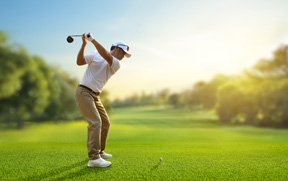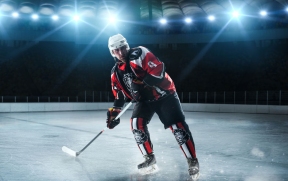Spring is just around the corner and the outdoor soccer season will be in full swing in a few weeks. It is time to dig those soccer cleats out from the bottom of the shoe bin and to see if they still fit. If it is time for a new pair of cleats, IBJI would like to provide some important information for you before you head off to the store to purchase a new pair.
In general, cleats are designed with a stiff sole to provide support and allow the studs to be attached to them. The boot should fit snug to provide a good interface between the ball and foot. If additional cushion is required, you will probably need to add some type of insole to the cleat. There are a number of different insoles that you can purchase at any soccer store to fit in the cleat.
- There are several important factors involved in making the decision on what shoe to buy. Unfortunately the color of the shoe should not be the most important factor in what cleat that you decide to wear. No two players have the same feet and depending upon the type of foot that you have and the surface that you play on, you have to make sure that you purchase a cleat that best suits your needs. Some important things to consider before you make the big decision:
- Do you want kangaroo leather or microfiber? If you choose the kangaroo leather, you need to purchase a shoe that is pretty snug/tight when you buy it because it is going to stretch over time. Microfiber will not stretch, so you should buy a shoe that feels like a normal fit on your foot, not too tight. Some of the microfibers will produce small cracks in the part of the shoe where you bend over your toes.
- Are you going to put an orthotic in the cleat? If so, you need to get a wider soccer cleat. Except for the Nike Total 90, Nike cleats in general tend to run narrower and do not work as well with orthotics. Kelme, Diadora, and Lotto brands tend to run wider so they will accommodate an orthotic easier. If you currently wear orthotics, make sure that you take them with you and try them on in the cleat for a better fit.
- Do you want a boot for game day only? The Nike Mercurial Vapor is an expensive cleat that is a very lightweight (7-7.8 oz) and is designed more for “game day” and not practices secondary to the support being sacrificed for the weight. The Vapor runs narrow so it will not accommodate an insert.
- Adidas has come up with a lighter shoe to match up with the Nike Mercurial Vapor. The Adidas F50, Adizero weighs 5.8oz and has the same type of arch support that is in the Nike. Once again, it sacrifices support/ protection for the lighter materials necessary for speed. It is built on a “sprint frame construction” that is supposed to give the player more speed. Adidas does provide extra insoles for shock absorption to put in the shoe but then it makes the shoe heavier.
- The Adizero Prime comes in at 5.1 oz. and is made on a single layer design so that it is meant for speed. There is no foam or lining in this shoe so less protection. This shoe comes in kangaroo leather or microfiber. Both of these cleats are meant for firm natural surfaces and are considered game day shoes and not training shoes. They are expensive and really not necessary for the younger players.
- Many of the higher end Adidas cleats are constructed on a “powerspine” or “powerpole”. This is a bar that runs vertically along the forefoot that is designed to give the player more “power” in their push offs. The Adidas Predator has the power pole, the external heel counter and is a little wider. However, if you wear an orthotic, the powerpole in the forefoot may throw your foot and orthotic off in the shoe so we do not recommend this boot for an individual who needs to wear orthotics. Note: The heel counter is the base of the shoe on which the heel rests.
- Do you want a low profile cleat or not? The low profile cleat is lower around the ankles and is designed to form to the foot when the player is kicking the ball. This may be more beneficial in the older player who has developed good dribbling skills and wants the shoe to feel like a glove on his/her foot. Puma King is a very good low profile cleat.
- Do you need more support in the heel counter? Many cleats are made with an external heel counter to give more support to your heel in the shoe. In theory, the shoe will have a bit of a wider heel to it. The Adidas Predator is a good example of this type of cleat.
- Many of the cleats under $80 do not have a removable insole. In making the decision of choosing a cheaper cleat, you may be risking a less modifiable shoe to your meet your foot needs.
- Are you playing on natural surfaces or turf? The shoes respond differently to the turf/grass and you may want to purchase a cleat that responds best to the surface that you will spend most of your time playing on.
- If you currently wear orthotics, make sure that you take them with you and try them on in the cleat for a better fit.
If you purchase a pair of cleats and are not for sure if they are the best ones for your foot type, you can give us a call and stop by for a free screening and we will evaluate the shoe and how it fits your foot. Jeannie Grant, ATC and owner of Soccer & More in Northfield, IL, can provide you with excellent advice during the cleat purchasing process. She has many years of experience fitting soccer cleats and working as an Athletic Trainer with high school athletes and can act as another resource for soccer cleat fitting.
* Thanks to Jeannie Grant of Soccer & More for working with us to compile this information. IBJI is not affiliated with Nike, Adidas, Kelme, Diadora, Lotto or Soccer & More nor do they not receive any financial incentives from them.




